Soon contacting phlebologists with advanced varicose veins are the main reason that it's too late to affect the disease with ointment or gel.Doctors need to prescribe more effective treatment, including surgery in varicose veins in the legs.We must not forget that even the removal of the operation of a vessel affected by the disease does not guarantee complete healing - the disease can spread to healthy tissue.
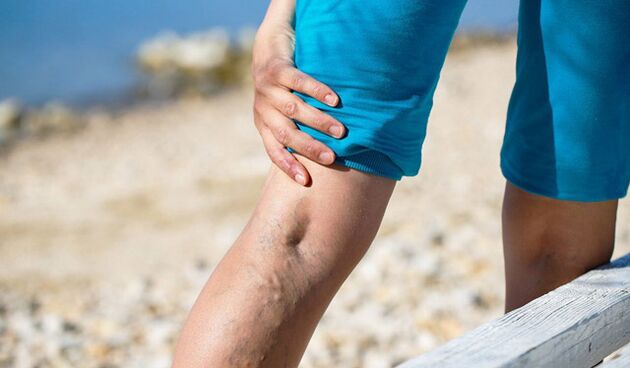
Development of varicose veins, or varicose veins is a disease characterized by the weakness of the valve in the veins and vascular wall dysfunction, as well as blood stagnation in the lower veins.This pathology is full of trophism, or fabric nutrition, the result can be a difficult and long healing trophic ulcer, but also dangerous in stagnant blood and a bloodline formed by blood flow throughout the body.In addition, in the case of the formation of thrombotic impairment in the vascular wall (phlebotrombosis), its infection with the development of the disease is possible - thrombophlebitis.
Surgery of varicose disease
The operation for the lower leg varicose veins is radical and consists of eliminating subcutaneous veins from the lower leg (phlebectomy) or in the vein sclerosis in the lower leg and hip.
Traditionally, phlebectomy (crossectomy) is performed according to the bebcock method and consists of introducing investigations into the vein lumen with the next stretching completely throughout its length through the outdoor skin.Incision is injected at the end of the operation with cosmetic stitches.
Mini-phlebectomy is used to remove very short parts from the veins, during operation, the veins are not used.The cut on the skin is not carried out, and a piece of veins are removed through a thin puncture on the skin that does not require stitching.
With a small area of damage to varicose veins, it is possible to perform a softer technique - stripping.This stretches with a thin hook only varicose nodes.The experience is carried out through two wounds on the skin with the next suturing.The various techniques are cryostopping - "sinking" veins to cryosonda using low temperatures, damaged nodes are also stretched.
Vienna sclerosion is the introduction of sclerosant into its lumen - a substance that "attaches" the vein wall to each other, but the veins remain far under the skin, not performing its function.The flow of blood through the veins stopped and through the collateral vessel, without breaking the flow of vein blood from the lower limbs.Vienna sclerosis is performed under ultrasound control.
The freezing of endovascular laser varicose veins is the latest method in the flebology and consists of introducing a thin investigation into the lumen of the veins with laser radiation, which gives the effects of cuterizing on the vein wall.
Radio frequency methods describe veins also refer to more modern treatment of varicose veins, but not all medical institutions are equipped with appropriate equipment.This technique consists of the effect of "cauterizing" on the vascular wall of high frequency radio waves.
Indications for removal of veins
Not all patients are indicated by surgery, but in some cases, it is still impossible to do it without it, as it is better to eliminate the source of inflammation and blood clotting potential than to expect complications.Countries -countries that require surgical intervention including the following:
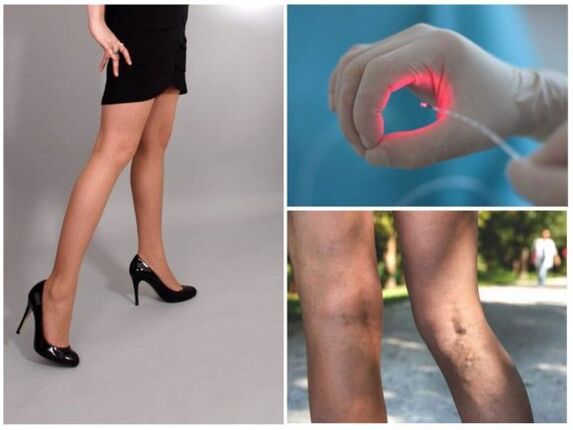
- The risk of an event or that has arisen thrombophlebitis,
- Frequent exception of thrombophlebitis,
- Large damage to subcutaneous veins,
- Severe symptoms of varicose veins - a constant feeling of severity and pain in the foot,
- Unassuming trophic ulcer,
- Nutritional disorders (trophic) lower leg tissue - Change of color and cooling of the skin and feet.
Operating contraindications
Implementing minimal vascular intervention is contraindicated in the following cases:
- Pregnancy 11 and 111 trimester,
- Acute infectious disease,
- Chronic diseases (bronchial asthma, diabetes mellitus, stomach ulcer, etc.),
- Acute stroke,
- Acute myocardial infarction,
- Increased inflammation from lower legs.
However, all indicators and contraindications are determined by a phlebologist or surgeon in the patient's full -time examination process.
Which method to choose?
The use of certain treatment methods is only evaluated by a doctor, based on the level of dissemination of the process.
Of course, with small nodes, less invasive methods are better, such as mini-flebectomy, short stripping, laser splashes and sclerosis, due to the fact that they are less traumatic and practical does not require a period of recovery.At the same time, with the length of the large varicose vein, priority is given to traditional phlebectomy, which not only requires spinal anesthesia, but also relatively traumatic surgery, leaving aesthetic defects in the form of postoperative scrames on the feet.
In this case, you cannot postpone a visit to your doctor in the early stages of existing varicose veins, and moreover, you do not need to leave less traumatic surgery if your doctor sees this need during the examination.
When is it better to do the operation?
The decision on the need for surgical treatment is only made after consulting a phlebologist or vascular surgeon.However, in the early stages when the patient is only concerned about aesthetic discomfort in the form of varicose nodes, as well as a little swelling at the end of the day, you can try to stop further development of the process of using compression knitwear and venotonic drugs.
In cases where there is pain in the limbs, as well as the risk of complications, it is not recommended to slow down surgery.
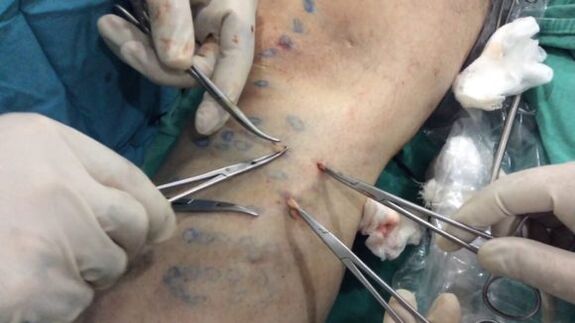
Preparation for operations
Before planning an operation to remove the veins, the patient should perform some of the required examinations.This includes consultation of the surgeon or phlebologist, as well as the lower leg ultrasound.In cases where the patient is indicated by the removal of the veins, it is examined at an outpatient level, in particular, general and biochemical blood tests, blood tests for freezing (inc, acts, etc.), ECG and chest organs should be performed.
On the day prescribed by a doctor, the patient must come to a medical institution that practices phlebectomy.You can freely shake your hair on the lower leg, thighs and in the inguinal zone on the affected member's side.The day before, you had to limit yourself to a little dinner, at surgery it was necessary to come on an empty stomach.Patients must warn the surgery doctor and anesthetist about the intolerance of the drugs taken earlier.
How operations are carried out
After the patient arrived at the clinic and preliminary examination by the operating and anesthetic surgeon, the issue of anesthesia was resolved.In the case of conventional phlebectomy, spinal anesthesia is used, with mini surgery, local anesthesia is used by strangling skin with novocaine or lidocaine solutions.
After anesthesia, the surgeon prescribes the location of the veins using ultrasonic dopplerography (UZDG).Furthermore, through slices on the skin, investigations are introduced and the main stage of the operation is introduced-intersection and clothing area during phlebectomy, stretching the veins with mini-flebectomy (only through punctures, and not through slices) or exposure to lasers on the walls on the walls.The main level takes half an hour to two to three hours, depending on the amount of operation.
After the main stage, the wounds were injected on the skin, an urgent aseptic bandage was used for wounds and the patient was controlled to the ward, where he would be under observation from several hours to a day.In the ward, the patient wears compression linen, which is not removed for three days.
A day later, the patient returned home.If the surgeon prescribes the bandage, the patient visits them daily or daily.The stitches were released seven days after the operation, and two months later, the UPS from the lower leg was carried out.
When is the operation not allowed?
Although surgery to remove veins with varicose veins provides good predictions and is carried out by effective methods, there are still several factors, the presence is contraindicated for surgical intervention:
Removal of varicose vein phlebectomy
- Vein thrombosis in the lower leg.
- When the inflammation process appears in the feet, including erysipelas and eczema.
- Heart disease and infectious diseases.
- Trimester Pregnancy -2 and 3rd.
- Lifetime age.
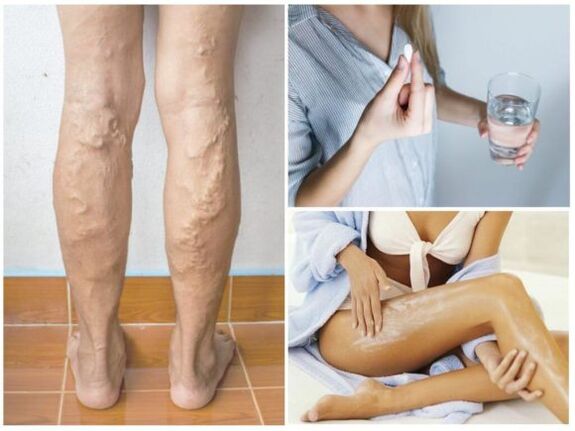
Is complications possible after surgery?
Operating techniques, sharpened for perfection for decades, allow you to minimize the risk of post -operative complications.However, in very rare cases (less than 1%), the development of adverse consequences such as:
- Post -operative hematoma on the skin - resolved for several months,
- The postoperative seal under the skin along the remote vein also disappeared a month or two after surgery,
- Mechanical damage to lymph vessels leading to lymphostasis (lymph nodes) is treated conservatively, but after several months the lymph begins to circulate according to anastomosis, and lymphotots from the limbs are performed correctly.
- Damage to the subcutaneous nerves, indicated by temporary disorders of the skin sensitivity - are freely equated for several months.
Complications and consequences of surgical treatment
No matter how talented the surgeon, the varicose veins after the surgery sometimes make it again in the form of complications.No one can assume how this or the organism will behave.After surgical intervention on the removal of varicose veins 2 and 3, there may be consequences that do not require treatment - bruises and hematomas, this is the normal reaction of the body to tissue damage.If the patient will follow the suggestion, then everything will pass quickly.Among other consequences, one can note:
- many bleeding;
- decrease in the sensitivity of the limbs (manifests itself with damage to the subcutaneous nerves);
- suppuration when entering the infection;
- numb, etc.
For pain, they can be observed exclusively with phlebectomy, two other methods of treatment are almost painless.If there is an unpleasant sensation, then they can easily stop analgesics.
The consequences can be serious;Among the most dangerous, thromboembolia is distinguished.This is an acute blockage of blood vessels with thrombus separated from its localization and circulating with blood flow.If the patient is helped in time, then he or she can be a disabled and even die.
Forecast and lifestyle after surgery
After surgery, for several days, pain in the body is controlled and insignificant edema is possible.To stop unpleasant symptoms, doctors are prescribed medications that are not prescribed -ketorol, nise, and others.Immediately after surgery, the patient should start wearing compression pants and performing physiotherapy training prescribed by your doctor.
On the second day after surgery, the patient is allowed to walk slightly.After a week or two, walking slowly should be determined for a few hours a day.
Provisions such as ::
- Rejection of bad habits,
- Proper nutrition with the exception of fat and harmful products,
- Compliance with the work regime and rest,
- Exceptions during working hours are only inactive or just standing - changes in the position of the limbs in the process are required.
In conclusion, I would like to note that, based on reviews, surgery to eliminate good veins, and serious complications practically do not arise.In addition, the risk of complications that threaten the veins (thromboembolism, for example) decreases significantly after the removal of the expanded veins.Currently, the amputation of the limbs is due to severe inflammation as well as gangrene due to thrombophlebitis (especially against the diabetes background), so it is best to contact the surgeon at an early stage and do not refuse to remove the veins if there is a need.Therefore, you will take care of yourself not only the healthy limbs, but also the health of the whole organism.
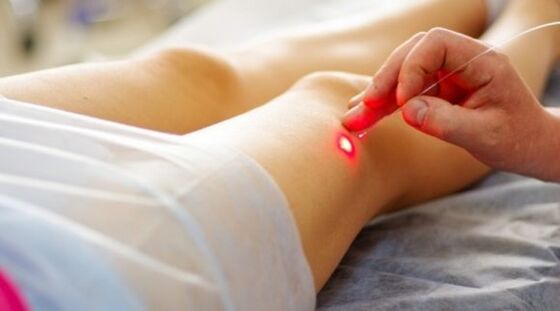
Precaution
With bad offspring, when relatives are diagnosed with varicose veins or someone at risk for other reasons, it is important to take steps -preventive measures:
Varicose injection
- frequently take vitamin C, which strengthens the blood vessel wall and improves the characteristics of blood composition;
- Use medications, their consumption must be agreed with your doctor;
- using compression linen;
- Physical education is important, swimming, walking, biking, riding well.
Prevention also implies a transition to a healthy lifestyle - you need to review your diet and leave bad habits.


















